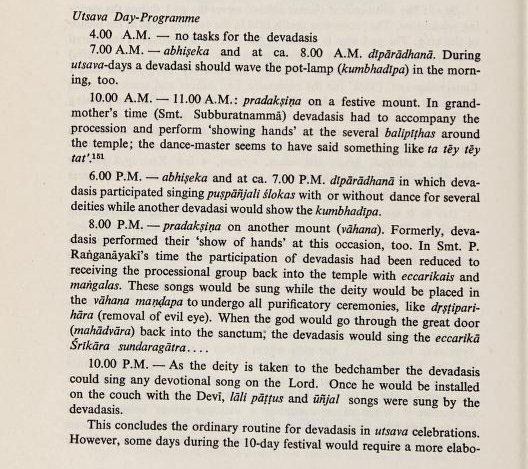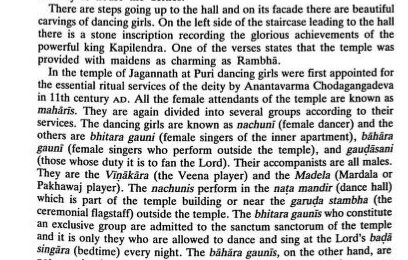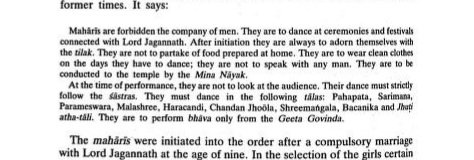Devadasi System
When we hear the word Devadasi, we get a different thought, and the present society compares them to Vaishya. So how was Devadasi really. How did the society see them? Let's find out.

Before knowing about Devadasis, one should know about Indian temple and its customs. Temple is an integral part of Sanatana Dharma. It was making a unique contribution to the religious, spiritual, art and educational fields.
Hindu temples function according to Agama Shastras. Temples of Shiva follow the Vaishnava Agamas, like the Shaiva Agamas and the temples of Vishnu.
According to these Agamas, the worship festivals of the temples take place. Important acts to be followed in Raga Taala Nritya Puja. Dance service is very important during puja. For this reason these musicians and dancers were hired for this purpose

Reference: The devadasi of Tamil Nadu: a study, by R.Nagaswamy
https://indianculture.gov.in/devadasi-tamil-nadu-study
Now let's come to the topic of Devasi. Devadasis are dancers who have devoted their lives to God and know that God is their everything. They were called Nitya Sumangali.
History tells us that the lives of Devadasis were at their peak during the Vijayanagara period, like the kings of Tamil Nadu. It is known that the work of Devadasis was to protect the king from the evil eye and also to bring water for abhisheka from the Kalyani of the temple, and the society looked upon them with great respect.

The devadasi system is essentially based on two phrases nitya dasya and nitya kanta bhajanatmaka. Women motivated by intense devotion to god dedicated themselves to the service of god and came to be called devadasis. The devadasi system is essentially connected with temple worship, as a bhakti movement result large number of temples came into existence. To prperly understand the devadasi system in Tamil Nadu we have to understand the roots of devotion and temple movement. According to Narada Bhakti is love of god and no wants or sorrows. Devotion to God means cultivating love and love alone in the form of perpetual service and perpetual love. Silappadhikaram dance in Tamil Nadu was an integration of Bharata's dicta and regional practice. Present article is a study of devadasi system in Tamil Nadu.
The state and the society highly respected him and his work. Also, they used to give land and gold as a gift for their service.

Devadasis were extremely devoted to the deity they believed in, and their houses were also located in the lanes of the rich. Also everyone could meet him without crying.

Here you can see what were the duties and tasks of Devadasis during the festivals.

Devadasis were not supposed to dance as they wanted, they had to follow the rules made according to the agama and different deities of the temple. The raga tala dance was different for each god. See the list below.

Even in the famous Puri Jagannath temple of Odisha we find the practice of Devadasi and their services are mentioned here.

Devadasis of Odisha used to perform Mahari dance in temples and hence they were called Maharis. Many say that Devadasis are low caste but the following fact proves it wrong.

Those who compare Devadasis to Vaishyas should see the following sentence. Devadasis were forbidden to associate with men, while dancing the consciousness had to be completely in God. There was a rule that one should not look at the audience while dancing.

Devadasis were considered a symbol of good fortune by the society. Also, they used to call him for the work of Mars in their house.

The life of Devadasis, who led an otherwise divine life, gradually declined after the 11th Mughal invasion. Again they flourished during our Vijayanagar period.
In 1892, he addressed the then Viceroy and General Madras Governor of India as Vaishyas like Devadasis' Nach Girls. In the name of social reform, they are depicted in history as Vaishyas.
If she wanted to become a vaishya, he did not have to learn all these difficult arts and there was no need to follow strict shastra rules.
Devadasis who were once a part of the culture and enriched the culture should be respected and given a place of honor in history.
MS Subbalakshmi
For many women, MS Subbalakshmi’s tale is one of emancipation and
empowerment. Born to Shanmugavadivu in Madurai, generations of MS’s
family belonged to the Devadasi tradition, a class that dedicated
themselves to the service of the temple Gods. They formed an important
part of the religious culture of Southern India, and received training
in the arts. As the economic foundation of the system collapsed with the
decline in the fortunes of the royal kingdoms, and their art became a
means of survival for the Devadasis, the system came to be associated
with sexual exploitation, and the art with exhibitionism.
https://www.academia.edu/25304347/NITYASUMANGALI_
towards_the_semiosis_of_the_devadasi_tradition_of_
South_India_May_18_1984_PhD_Dissertation_University_
of_Utrecht_The_Netherlands













Comments
Post a Comment